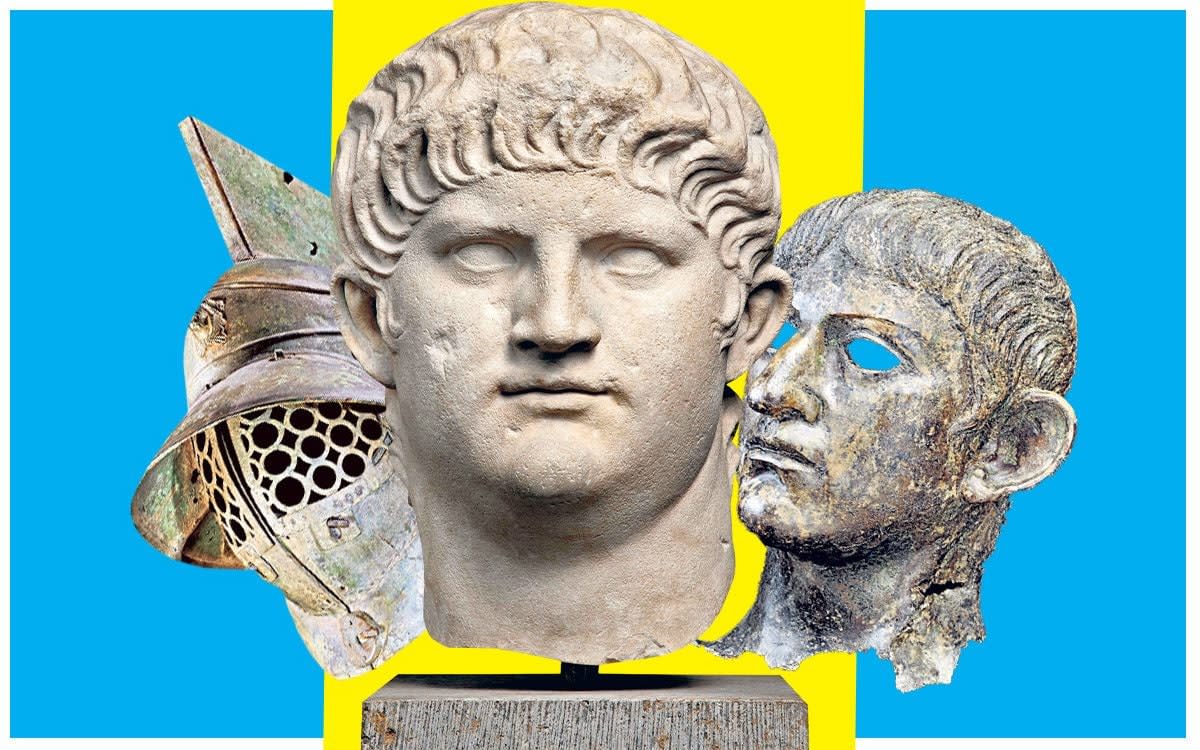How Roman ‘cancel culture’ meant Nero’s reputation was fiddled after his death

Nero’s notorious reputation is to be rehabilitated by the British Museum as curators reveal how the emperor was traduced by “cancel culture” in the Roman Empire.
Known for being the emperor who fiddled while Rome burned, Nero’s brutal reign between 54 and 68 AD included persecuting Christians and matricide, the killing of his mother.
His statues were quickly destroyed in the aftermath of his overthrow and subsequent suicide at the age of 30, and contemporary portrayals paint him as a corrupt and incestuous murderer.
But British Museum curators say Nero was instead one of the first victims of “cancel culture”, with reasons behind his downfall largely out of his control. Monuments toppled following his leadership have been described as the 1st-century equivalent of “statue wars”.
A new exhibition at the museum will seek to restore the reputation of Rome’s fifth emperor by presenting him as a populist adored by the common people but disparaged by the patrician propaganda of a “tiny elite”.
Roman statue wars
Dr Thorsten Opper, Ancient Rome curator at the British Museum, told The Telegraph: “It’s weird how topical it has suddenly become in the last few years. Cancel culture and statue wars, that all resonates so much.
“Statue wars is perhaps most appropriate, what we saw with Colston’s statue in Bristol and various monuments in the US.
“As soon as Nero was dead there were jubilant people in the street toppling his statues, destroying them, chiseling out his name from official records.
“Even if you look at the sources, they are so shockingly partisan and biased. It’s as if someone tried to write a biography of Joe Biden based on Donald Trump’s tweets.”
After Nero’s death, writers like Tacitus and Suetonius spread the myth that Nero started the Great Fire of Rome and played the lyre while the city burned, all in order to build a bigger palace, then blamed the blaze on the Christians.
It was also written that the ruler who came to power at the age of 16 kicked his second wife to death while she was pregnant, raped the scared Vestal Virgins, and committed incest.
But more recent research shows Nero was popular with the plebeians but vilified by later dynasties securing their position, and writers entertaining a Roman elite scandalised by Nero’s popular appeal.
Dr Opper said: “The writers have a tiny readership. It’s a tiny elite, it’s less than the ‘one per cent’.”
History written by misogynists
While Nero did have his mother and one of his wives killed, in keeping with other emperors, curators at the British Museum will show him as a “victim” of societal changes he could not control and which led to his downfall.
Statues that survived destruction, as well as graffiti written in praise of the emperor, will be used to tell the full story of this reign, which saw the revolt of Britons under Boudica.
While scrutinising the propaganda of ancient chroniclers, the British Museum will also tackle their habit of portraying women, like Nero’s murdered mother Agrippina, as scheming king-makers
Dr Opper said it was “shocking how misogynistic the sources are”, adding: “It has an impact on how little positive is remembered about these women.”
Their stories and those of the common people across the Roman Empire, particularly in Britain, will be told with more than 200 objects, many of which will be displayed in the UK for the first time.
Nero: The Man Behind the Myth opens on May 17 and runs until October 24.

